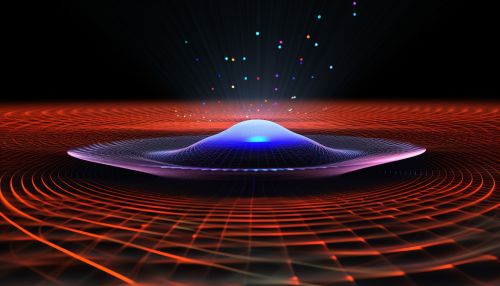Gravitation
Introduction
Gravitation, also known as gravity, is a natural phenomenon by which all things with mass or energy—including planets, stars, galaxies, and even light—are brought toward (or gravitate toward) one another. It is one of the four fundamental interactions of nature, alongside the strong interaction, weak interaction, and electromagnetism.
History of Gravitational Study
The study of gravitation is a significant part of the history of physics. From the ancient Greeks to modern scientists, the nature of gravity has been explored and examined, leading to significant advancements in our understanding of the universe.


Ancient and Medieval Understandings
The ancient Greeks were among the first to study gravity, with philosophers such as Aristotle proposing that objects fall towards the Earth due to their natural place in the cosmos. This Aristotelian view of gravity dominated scientific thought for nearly two millennia until it was challenged by the work of Galileo and later, Newton.
Newton's Law of Universal Gravitation
In the late 17th century, Isaac Newton formulated the law of universal gravitation, which posits that every particle of matter in the universe attracts every other particle with a force that is directly proportional to the product of their masses and inversely proportional to the square of the distance between their centers. This law, combined with his laws of motion, formed the basis of classical physics and dominated the scientific view of the physical universe for the next three centuries.
General Theory of Relativity
In the early 20th century, Einstein's general theory of relativity revolutionized our understanding of gravity. Unlike Newton's law, which views gravity as a force, the general theory of relativity describes gravity as the curvature of spacetime caused by mass and energy. This theory has been confirmed by numerous experiments and observations and is the current description of gravitation in modern physics.
Gravitational Phenomena
Various phenomena can be explained by gravitation. These include the orbits of planets, the growth of tides, and the apparent weightlessness of astronauts in space.
Gravitational Fields
A gravitational field is a model used in physics to explain the influences that bodies exert on each other as a result of the force of gravity. In a gravitational field, a body of mass m experiences a force F, which is proportional to the mass of the body and the gravitational field strength g at the position of the body.
Gravitational Waves
Gravitational waves are 'ripples' in the fabric of spacetime caused by some of the most violent and energetic processes in the Universe. Albert Einstein predicted the existence of gravitational waves in 1916 in his general theory of relativity.
Gravitation in Quantum Mechanics
The integration of gravitation with quantum mechanics has been a longstanding problem in physics. While quantum mechanics has been incredibly successful in describing the physical world at very small scales, and general relativity has been equally successful in describing the physical world at larger scales, the two theories are fundamentally incompatible.


Quantum Gravity
Quantum gravity is a field of theoretical physics that seeks to describe gravity according to the principles of quantum mechanics. There are many approaches to quantum gravity, including string theory and loop quantum gravity.
String Theory
String theory is a theoretical framework in which the point-like particles of particle physics are replaced by one-dimensional objects called strings. In string theory, one of the vibrational states of the string corresponds to the graviton, a particle that carries gravitational force.
Loop Quantum Gravity
Loop quantum gravity (LQG) is a theory that attempts to describe the quantum properties of gravity. It is also a theory of quantum spacetime because, according to general relativity, gravity is nothing but the geometry of spacetime.
Conclusion
Gravitation is a fundamental interaction that governs the structure and behavior of the physical universe. From the motion of planets to the formation of galaxies, the force of gravity is a key factor in the dynamics of the cosmos. Despite the significant progress that has been made in understanding this force, there are still many unanswered questions, particularly regarding the integration of gravitation with quantum mechanics.
